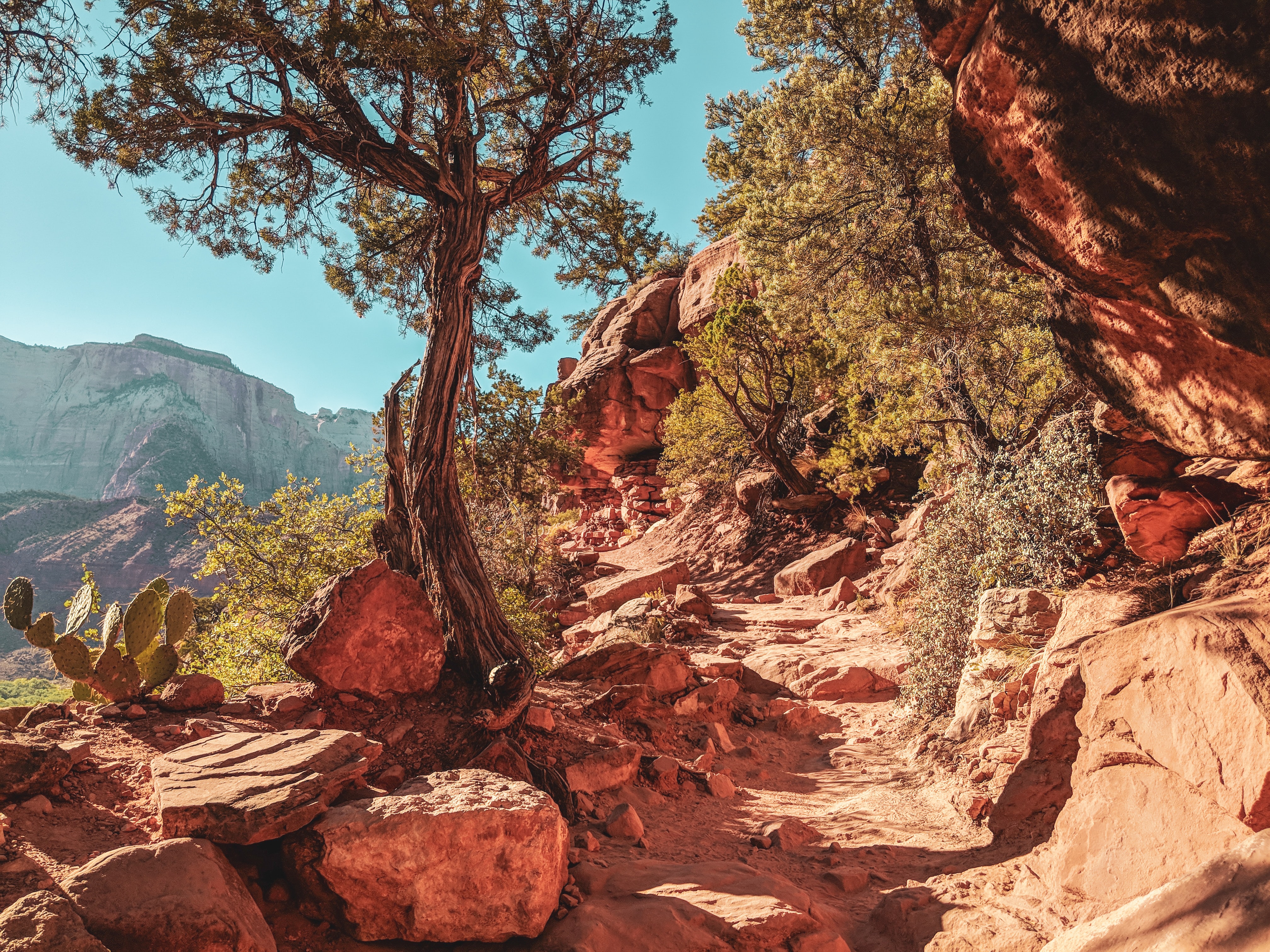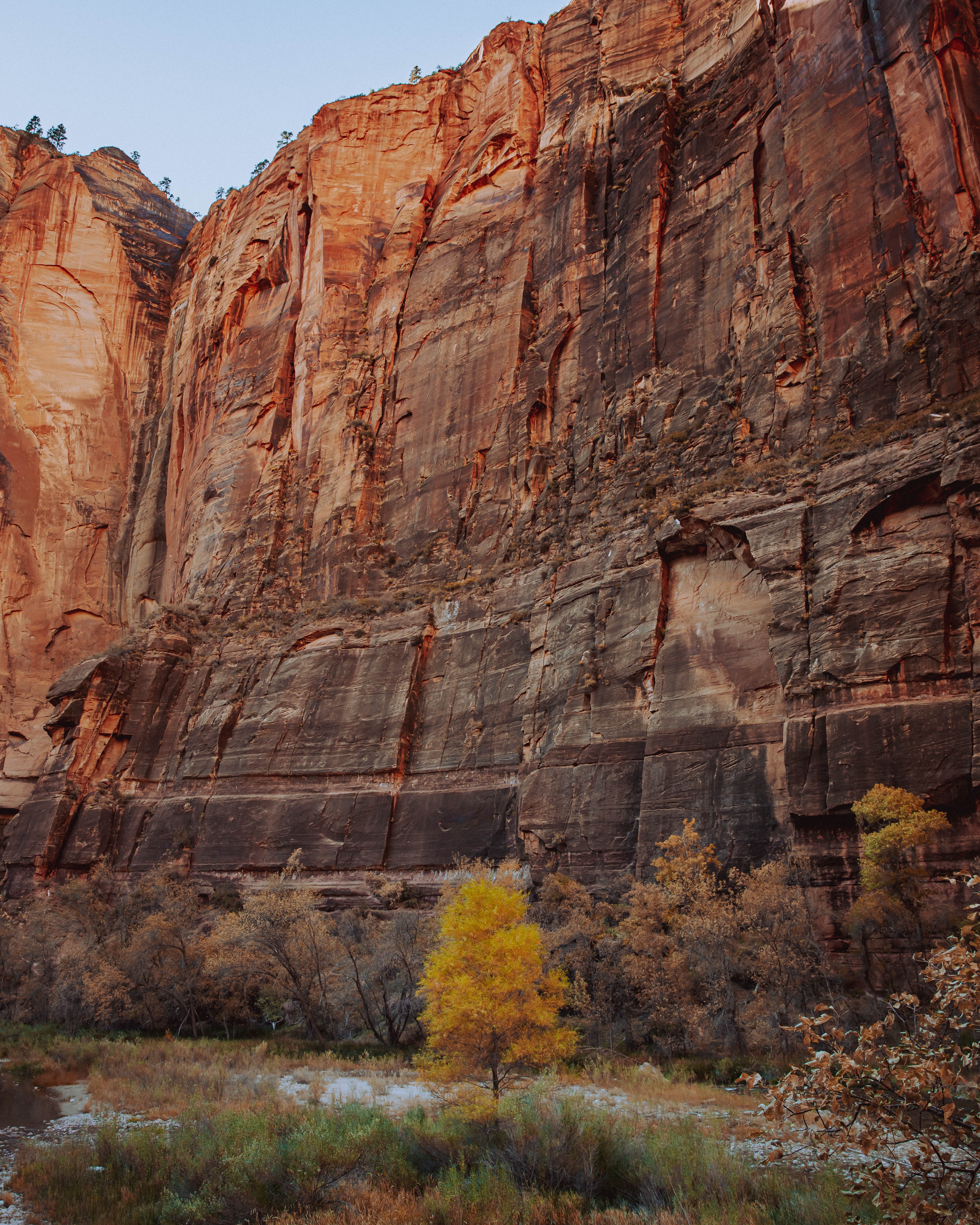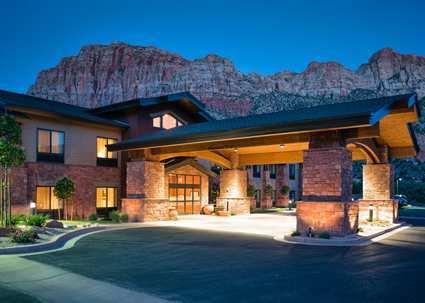Top Reasons to Visit Zion National Park
In a state filled with dramatic scenery that stretches to the horizon and seemingly endless bucket list adventures, Zion National Park is the crown jewel of Utah’s five iconic national parks. Zion’s landscape is filled with rainbow-colored rock layers chiseled into sharp peaks, high mesas, and deep, twisting canyons. It’s a place so hauntingly beautiful that you will never forget the silence of Zion’s sandstone cathedrals, the light reflecting off the slot canyons, the rushing Virgin River, or the architect of its cliffs and canyons. Everyone should visit Zion at least once in their lifetime to hike its trails, wade through canyon waters, and watch deer graze in open meadows. Named by early settler Isaac Behunin in 1863, Zion remains true to its name—the Promised Land and a place of refuge.
Here are a few of the reasons why it’s such a special destination.
Spectacular Scenic Driving Adventures
The six-mile Zion Canyon Scenic Drive, running north through the national park’s scenic heart, is one of Utah’s most spectacular road adventures. Skyscraping sandstone formations, including the Great White Throne and Temple of Sinawava, soar above the tumbling Virgin River.
The Zion-Mt. Carmel Highway (Utah 9) drops 2,000 feet from the East Entrance to the visitor center, passing through a 1.1-mile tunnel. On both drives, expect gorgeous scenery along the entire route. Take the free park shuttle to experience the canyon since the road is closed to traffic most of the year.
Iconic Hiking Trails: Hikes from Easy to Strenuous

World’s Best Canyoneering
Zion is renowned as one of the world’s best places for canyoneering, the sport of descending slender canyons. The national park invites adventurers to lower into fantastic watery slots and river-filled canyons that range from strenuous hiking and wading to technical challenges with swimming and rappelling.
Novices can hire an expert guide service in Springdale to safely navigate the park’s canyons, while experienced canyoneers explore remote crevices with specialized skills and a park permit. Zion’s great canyons include the famed Subway, Zion Narrows, Mystery Canyon, Pine Creek, Orderville Canyon, and Keyhole Canyon.
Desert Waterfalls
Fed by winter snowmelt and dousing thunderstorms, Zion’s waterfalls offer a refreshing respite from the summer heat. The sound of falling water in the desert promises a cool spray and an oasis of ferns and flowers. Many of Zion’s falls are ephemeral so plan to visit during the July and August monsoon season or in early spring to see them.
A couple of the best waterfalls are the dripping springs at Weeping Rock, a trio of falls at Lower Emerald Pools, and a 300-foot plunge at Upper Emerald Pools. Other popular spots include Pine Creek Falls, Archangel Falls below The Subway, and Mystery Canyon Falls in The Narrows. Use caution if it’s raining since flash flooding can occur, watch for slippery rocks below falls, and never stand on top of a waterfall.
Climbing Big Walls

Wildlife and Nature Study
Zion National Park’s 232 square miles protect a land of canyons and plateaus with diverse plant and animal habitats including pine forests, lush riversides, and barren slickrock. Zion harbors more than 1,000 plant species that allow a wide variety of wildlife to flourish. The park is birdwatching heaven with 291 species, including peregrine falcons and endangered California condors. Bring binoculars to spot some of Zion’s 78 mammal species. Watch rocky slopes for desert bighorns and canyon meadows for grazing mule deer. At night look for elusive ringtail cats and kangaroo rats along campground trails.
The Remote Kolob Canyons
The Kolob Canyons, hiding in the national park’s northwest corner, offers a glimpse into Zion’s wild heart with solitude, soaring cliffs, and few visitors. The canyon is usually accessed from I-15, but that route is closed through the end of 2018 for infrastructure improvements. Take SR9 to access the canyon during the construction. Kolob is a wonderland of sheer sandstone canyons and peaks, slot canyons, tumbling waterfalls, more than 20 miles of trails, and the 287-foot-long Kolob Arch, the second longest natural arch in the world.
The Kolob Canyons are an hour’s drive from Zion Canyon, and it’s the place to go for wilderness adventures. Take a hike up Taylor Canyon Trail to Double Arch Alcove or carry a backpack up La Verkin Creek Trail to backcountry campsites, Kolob Arch, and technical Beartrap Canyon.
Bike-Friendly Park
Pedal power is one of the best ways to see Zion Canyon, especially during the busy months when the park shuttle ferries visitors into the canyon. Zion, one of the few national parks that encourages bicycling, allows you to avoid packed buses and to enjoy the stunning scenery without looking through a window.
Bring your own bike or rent one in Springdale, then follow the paved Pa’rus Trail for 1.75 miles to Canyon Junction. Continue for 7.5 miles up Zion Canyon, yielding to passing shuttles and enjoy the views. The return trip to the visitor center is all downhill.
If mountain biking is more your style, head west from the park for miles of world-class singletrack at Gooseberry Mesa.
Great Dining and Lodging in Springdale

Springdale offers plentiful dining options for hungry Zion hikers, most bordering Zion Park Boulevard, the town’s main street. Popular favorites include Barefoot Taqueria, Oscar’s Café, Spotted Dog Café, Bit & Spur Restaurant, and Café Soleil. Stop at Zion Canyon Brew Pub on the park boundary for a chilled pint of locally brewed beer and pub grub.
So, after you get your fill of Zion, you can find even more outdoor adventures west of Springdale. And that including hiking, mountain biking, slot canyons, off-road driving, and rock climbing.
So, do you feel like visiting the Canyon in January? Then what are you waiting for? Plan and Book Your Trip with Sweetours today!
Contact us for further information!
Phone: 702.456.9200
Fax – 702.434.7163
Email – info@sweetours.com
